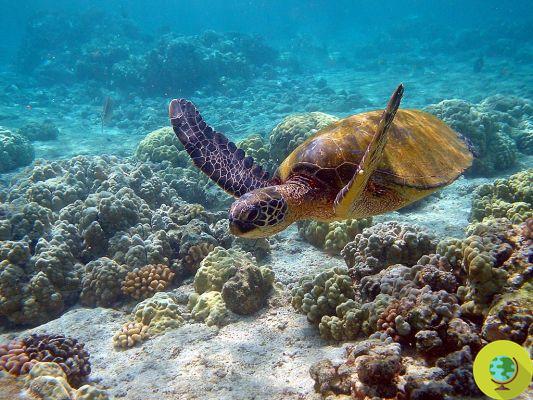
Sea turtles at risk from global warming. Research just published by the Royal Society Open Science magazine shows, for example, how sea level rise plays a key role in jeopardizing the survival of the green sea turtle or Chelonia mydas, a species long considered endangered.
Sea turtles at risk from global warming. Research just published in the Royal Society Open Science journal shows, for example, how sea level rise plays a decisive role in jeopardizing the survival of the green turtle or Chelonia mydas, a species long considered to be at risk of extinction.
Iclimate changes they stand slowly changing the world we live in: their influence is evident in the greater frequency and intensity of certain meteorological events, as well as in the increase in the level of marine waters and in the changes affecting flora and fauna, threatening the very existence of an ever-increasing number of species.
As has been repeated for years by scientists, the gradual rise in sea level is a threat that hangs over numerous animal species that inhabit coastal areas, since salt water, permanently altering the characteristics of the landscape, is able to destroy entire habitats, making them inhospitable.
For sea turtles, however, the problem is even more urgent and profound because of them habit of laying and burying eggs in the sand of the coasts, not far from the shoreline. As sea levels rise, unpredictable changes in the tides can cause the eggs to be repeatedly reached and submerged in salt water: in this case, as they no longer receive oxygen through the sand or land, the small embryos risk to be suffocated in the very first weeks of their growth. Thus a collapse in the births of live specimens is determined, which initiates the species to a slow but inexorable extinction.
This theory is confirmed by the recently published study, Nest inundation from sea-level rise threatens sea turtle population viability: the article points the finger precisely on the increasingly frequent flooding of broods by the tides, showing how the survival rate of green sea turtles decreases by 30% if the eggs have been immersed in salt water for a period of six hours.
The research, promoted by James Cook University, was born from an attempt to explain the gradual collapse in the birth rate of green sea turtles on Raine Island, a small paradise not far from the Australian coasts, north of the Great Barrier Reef, where the most populous existing colony of this species lays its eggs.
Se elsewhere green turtle broods lead to the birth of live specimens in over 80% of cases, on Raine Island the number of live births has gradually decreased, reaching worrying levels: in the period from 2011 to 2015, in fact, the annual percentage of new puppies was between 12% and 36%. Too low to suggest a simple chance.
Although the phenomenon has not yet found a definitive explanation, the authors of the article believe that it is the result of a combination of events: not just a deterioration of the health conditions of mothers, but also the effect of increasingly violent tropical storms and floods more and more frequent of the areas where the eggs are laid, which are making them less suitable for hosting and "feeding" the broods.
And, as we know, more intense storms and more frequent floods are among the effects of progressive climate change.
Lisa Vagnozzi
READ also
Sea turtles, finally return to lay their eggs in Linosa
Baby turtles first spotted on the Galapagos Islands in over 100 years


























